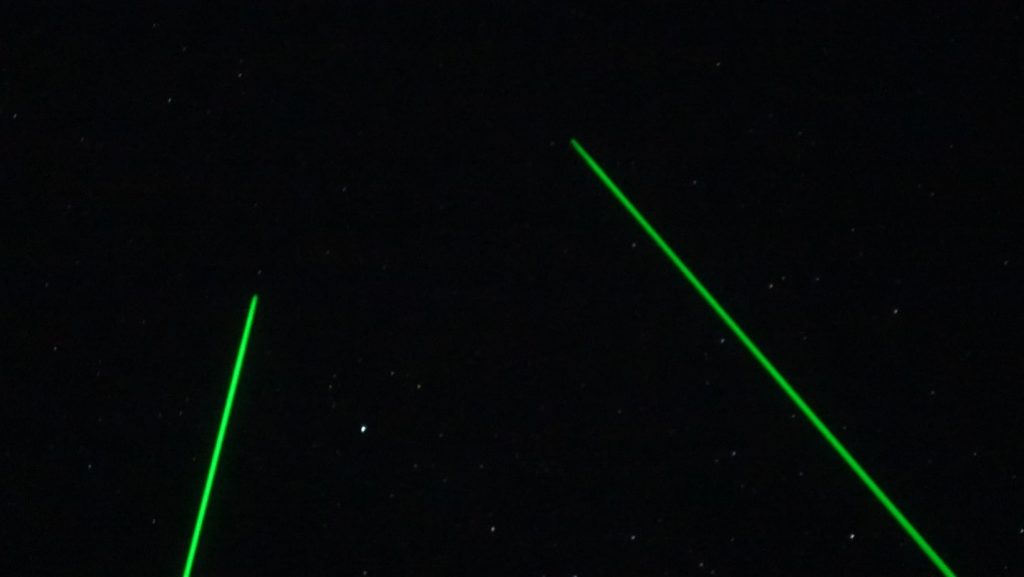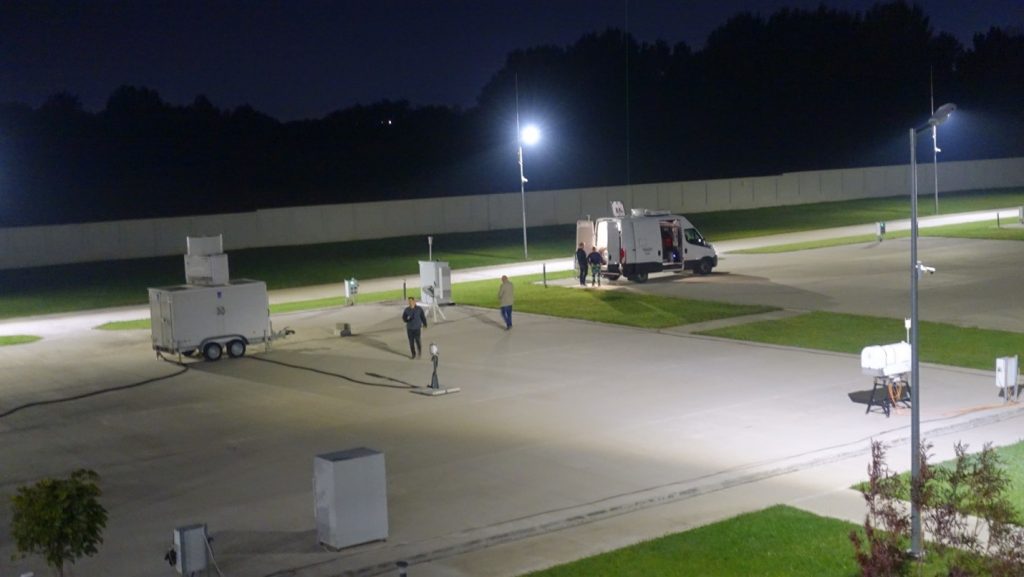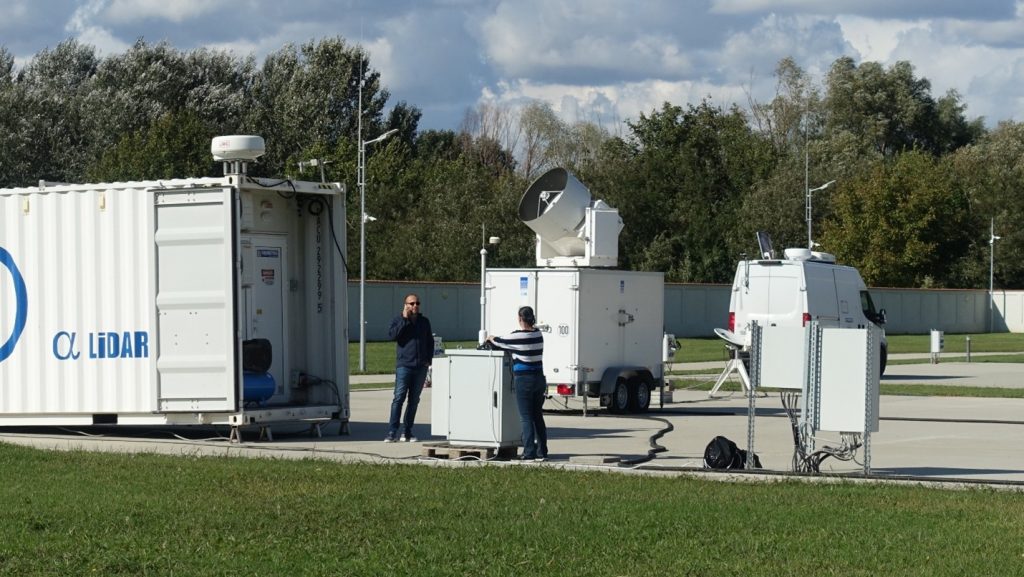ESA’s Mobile Raman Lidar (EMORAL) is currently making waves at the Măgurele Center for Atmosphere and Radiation Studies (MARS) in Romania. This advanced research facility, led by Principal Investigator Doina Nicolae, is located just six km south of Bucharest. The deployment of EMORAL is a crucial part of the preparations for ESA’s EarthCARE mission – a collaborative effort to enhance our understanding of atmospheric processes.
A synergistic effort at MARS
From 18 May to 31 May 2024, the EMORAL lidar, operated by the University of Warsaw (UW) team, led by Iwona Stachlewska, will join forces with two lidar systems from the National Institute for Research and Development in Optoelectronics (INOE): RALI and ALPHA.
This collaboration is set to push the boundaries of atmospheric research and calibration/validation activities.
EMORAL is a state-of-the-art lidar system developed through a collaborative effort involving the University of Warsaw (UW), Ludwig Maximilian University of Munich (LMU), National Observatory of Athens (NOA), Poznan University of Life Sciences (PULS), and companies such as Raymetrics, Licel, and InnoLas.
This complex instrument, part of ESA’s Opto-Electronics section (TEC-MME) at the European Space Research and Technology Centre (ESTEC), is designed to perform precise atmospheric measurements.

EMORAL and ALPHA lidar beams during the EarthCARE lidar intercomparison campaign at MARS/INOE. Credits: INOE
EMORAL emits laser pulses vertically into the atmosphere at multiple wavelengths (355, 532, and 1064 nm). These pulses interact with atmospheric molecules and particles, scattering light that is collected by a telescope and separated by a compact 9 channel polychromator.
This setup allows EMORAL to measure various atmospheric properties, including the optical characteristics of aerosol particles and their microphysical properties, such as particle size distribution. Additionally, the system can assess the biogenic character, shape and solubility of particles.
The activities at MARS include an initial intercomparison campaign, optimisation of the instrument’s setup and quality assurance tests. These steps are essential to ensure that EMORAL meets the high standards required by ACTRIS-ERIC National Facilities.
By the end of this campaign, EMORAL is expected to achieve compliance certification, ensuring its readiness for future missions.
One of the primary challenges for ESA’s calibration/validation missions is to effectively deploy the EMORAL lidar at various locations under satellite overpasses. The observations conducted in February and those currently underway aim to test the lidar’s performance during EarthCARE ‘dry runs.’

Iwona Stachlewska (UW) and MARS/INOE staff during EMORAL lidar nighttime operation for EarthCARE ‘dry run’ in May 2024. Credits: INOE
The UW team is focused on evaluating the lidar’s effectiveness, ensuring quality assurance, and providing recommendations for its operational use. This field campaign will also gather insights for future improvements and maintenance, ensuring that EMORAL continues to be a valuable asset in atmospheric research.
This current deployment follows a successful mission hosted by Diego Fernandez Prieto at ESA-ESRIN’s Science Hub in February 2024. During this event, the lidar was introduced to visiting scientists and staff, demonstrating its capabilities and operational readiness.
The work being done at MARS with the EMORAL lidar represents a significant step forward in EarthCARE preparation, promising to enhance our understanding of the atmosphere and improve satellite-based observations.
The Role of MARS and CARS in Atmospheric Research
MARS is a part of the Lidar Calibration Centre (CARS) within the Aerosol, Cloud and Trace Gases Research Infrastructure (ACTRIS-ERIC). The centre is divided into two main components: Aerosol Remote Sensing, coordinated by Livio Belegante and Jeni Vasilescu, and Cloud Remote Sensing, led by Anca Nemuc. These teams are not only performing continuous measurements but are also conducting targeted observations to support EarthCARE’s preparation.
International Collaboration and Expertise
The scientists at INOE and UW bring extensive experience in lidar operations, thanks to their involvement in numerous international projects. These include initiatives funded by the H2020 program of the European Commission and several COST Actions such as PROBE and HARMONIA. The current activities are part of the ATMO-ACCESS Pilot for EarthCARE calibration/validation activities, guided by Doina Nicolae (INOE) and Holger Baars (TROPOS), with support from ESA experts Robert Koopman and Stefanie Rusli.
Blog written by: Iwona Stachlewska, Faculty of Physics, University of Warsaw (UW) and Anca Nemuc, Remote Sensing Department, National Institute of R&D for Optoelectronics (INOE)

Jeni Vasilescu and Livio Belegante during campaign preparation at MARS. Credits: INOE
Credits:
The EMORAL lidar was upgraded several times within the POLIMOS activity of the ESA-ESTEC (PI Iwona Stachlewska UW / Jonas von Bismarck / Dirk Schuttemeyer ESA).
More info on POLIMOS activity: https://www.igf.fuw.edu.pl/en/projects/93/
PI of EMORAL lidar: Iwona Stachlewska (UW) / Pol Ribes (ESA), EMORAL cal/val PI: Afwan Hafiz (UW), EMORAL operation PI: Patryk Poczta (UW/PULS).








Discussion: one comment
What an exciting update on the deployment of the EMORAL lidar at MARS!! The synergy between INOE’s RALI and ALPHA systems and the upgraded EMORAL from UW is a promising advancement for atmospheric research. Such collaborative efforts are driving innovations in lidar technology, especially with EarthCARE’s cal/val requirements in focus. Keep lighting the atmosphere, one pulse at a time !!!!